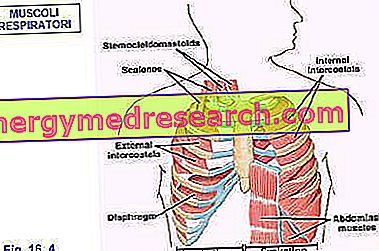Generality
Cavitation is a particular physical phenomenon, which is characterized by the continuous formation of tiny bubbles (microbubbles) of steam inside a fluid, followed by their implosion.

A typical example of cavitation meant in the negative sense is that responsible for the erosion of the propellers of the ships that - rotating at high speed - cause a cavitation phenomenon which in the long run causes damage to them.
In other cases, however, cavitation is used to gain an advantage. Just think, for example, of supercavitation torpedoes used in the military, which exploit this phenomenon to be able to travel at extremely high speeds.
In the same way, the phenomenon of cavitation is used in an advantageous way also in the medical and aesthetic fields, and this is exactly what we will deal with in this article.
Uses and Action Mechanism
Cavitation in the medical field can be used, for example, for crushing kidney stones or for performing cellular or molecular cleavages.
However, currently cavitation is used above all by aesthetic medicine to eliminate localized fat deposits and skin blemishes, such as cellulite and orange peel skin.
This particular aesthetic treatment involves the generation of the cavitation phenomenon through the use of ultrasounds supplied by special machinery.
When cavitation is used for the treatment of localized fat deposits, these instruments generate ultrasounds at well-defined frequencies, which reach the subcutaneous adipose tissue. The ultrasounds thus delivered are able to cause changes in pressure and temperature in the interstitial fluid present between the adipocytes.
These variations cause the rapid formation of microbubbles of vapor to occur. These bubbles, under the influence of ultrasounds, increase and decrease their volume very quickly, until they eventually implode.
The microbubble implosions generate mechanical energy and very high and localized pressures, which cause the cell membranes of the surrounding adipocytes to rupture, with consequent leakage of the fats contained in them.
The lipids thus escaped from the destroyed adipocytes are removed from the treated area through the lymphatic synthem, to then be processed by the liver and subsequently eliminated, exactly as happens for the fats taken through the diet.
Types of Cavitation
Depending on the type of use made of it, and depending on the frequencies of the ultrasound used, we can distinguish two different types of cavitation: aesthetic cavitation and medical cavitation .
In this article, however, we will deal mainly with the latter.
Aesthetic Cavitation
In aesthetic cavitation, the cavitation phenomenon is generated through the delivery of ultrasounds at high frequencies (1-3 Mega Hertz or MHz).
The microbubbles that form in interstitial liquids with high-frequency ultrasounds are generated in smaller quantities and with smaller volumes than those formed with low-frequency ultrasounds.
Furthermore, high-frequency ultrasounds cannot penetrate in depth like those at low frequencies and, for this reason, they are not able to reach subcutaneous fat deposits.
The aesthetic cavitation, therefore, is limited to acting exclusively on the surface level of the skin, in order to stimulate it, revitalize it and tone it.
Being a procedure that does not act in depth, aesthetic cavitation can be performed by non-medical personnel, such as beauticians in beauty salons.
Medical Cavitation
Medical cavitation, on the other hand, makes use of instruments that generate ultrasounds at low frequencies (30-40 Kilo Hertz, KHz) and which are therefore able to penetrate down to the subcutaneous fat layer.
Unlike aesthetic cavitation, medical cavitation can only be performed by specialized medical personnel through the use of special electromedical devices of medical relevance only (that is, they cannot be used by non-medical personnel).
These devices are equipped with handpieces that transmit ultrasounds at the desired frequencies. Ultrasound can be emitted in a convergent or divergent manner.
The emission of the ultrasounds in a convergent way conveys them all to a small localized area. The divergent emission, on the other hand, will cause the ultrasounds to propagate "like a fan", involving larger areas of the body, allowing it to treat larger areas.
In any case, the ultrasounds emitted must be sufficiently penetrating and powerful to cause the lysis of fat cells, but not so powerful as to compromise the integrity of other organs or tissues, blood vessels or muscles.
Precisely for this reason, electromedical machinery used in medical cavitation is equipped with systems capable of regulating the frequency of ultrasound. These systems alternate the emission of ultrasounds at high and low frequencies, thus exercising a control action on the temperatures reached in the adipose tissue, preventing them from becoming excessively high and dangerous for other organs and tissues.
Before treatment
Before proceeding to the actual session of medical cavitation, the patient will have to carry out a preliminary interview with the doctor.
This interview is necessary for the physician to assess which areas need to be treated and their extension, as is necessary to determine if cavitation is the treatment that best suits that particular patient.
In fact, it is essential to remember that cavitation is indicated to eliminate those localized fat that cannot be eliminated with diet and physical activity, but in no case should it be considered as a therapy for overweight or obesity.
In any case, if the doctor believes that cavitation can be performed, then he will prescribe specific tests for the patient to check parameters such as cholesterol levels and liver and kidney function, so as to exclude the presence of any contraindications to the execution of the treatment.
Normally, medical cavitation does not require special preparations before its execution. However, it is very important that the patient drinks plenty of fluids and hydrates abundantly in the two or three days before treatment.
Hydration must be carried out in order to enrich the areas to be treated with interstitial liquids. In fact, the greater the liquid content, the more microbubbles will be produced by the ultrasounds and the more effective will be the cavitation.
In the event that the patient is unable to hydrate properly, it is possible to inject some physiological solution into the subcutaneous tissue a few minutes before starting the procedure.
During treatment
The doctor performs cavitation by passing the handpiece over the areas of the body that need to be treated, performing a sort of massage for the patient.
The procedure is not normally painful, but the patient will feel a sensation of heat and tingling that could become annoying.
In most cases, medical cavitation is performed without anesthesia, since the discomfort perceived by the patient is generally bearable. Furthermore, the communication of the sensations experienced by it can help the doctor understand when to move the handpiece. In doing so, you avoid the risk of excessively insisting on a certain area, thus preventing the appearance of any side effects.
The medical cavitation treatment can last from 30 to 90 minutes, but the average duration is around 40 minutes.
After treatment
Medical cavitation is not considered an invasive treatment, therefore, at the end of the session the patient can resume normal activities immediately. However, he must have the foresight to drink plenty of water and, above all, to follow a balanced diet in order not to frustrate the results obtained.
However, it is good to specify that to obtain visible results, a single cavitation session is not enough. Generally, it is recommended to perform from five to ten sessions, but this varies greatly depending on the area to be treated, its extension and the response of the patient to the treatment.
Side effects
Medical cavitation is considered a non-invasive, effective and safe treatment.
If properly performed, in fact, the side effects that it can cause are usually mild and tend to self-cancel quickly. Among these, we recall:
- Sensations of numbness and heat in the treated area.
- Appearance of mild edema in the area where cavitation was performed.
- Redness of the treated part.
Finally, there could be a potential risk of burns due to excessive heat production, but this is a very rare occurrence.
Contraindications
Despite the safety of use and the reduced side effects it can cause, medical cavitation has numerous contraindications.
More in detail, medical cavitation is contraindicated in the following cases:
- In pregnancy and during lactation;
- In women who use the intrauterine spiral as a contraceptive method if cavitation is to be performed in the abdominal area;
- In patients suffering from heart disease and / or vascular diseases;
- In patients with coagulation disorders;
- In diabetic patients;
- In patients with vestibular disorders;
- In patients with tympanic lesions and / or inflammation;
- In patients with peacemakers and / or metal prostheses;
- In patients suffering from chronic dyslipidemias;
- In patients with lipomas;
- In patients with liver disease.



